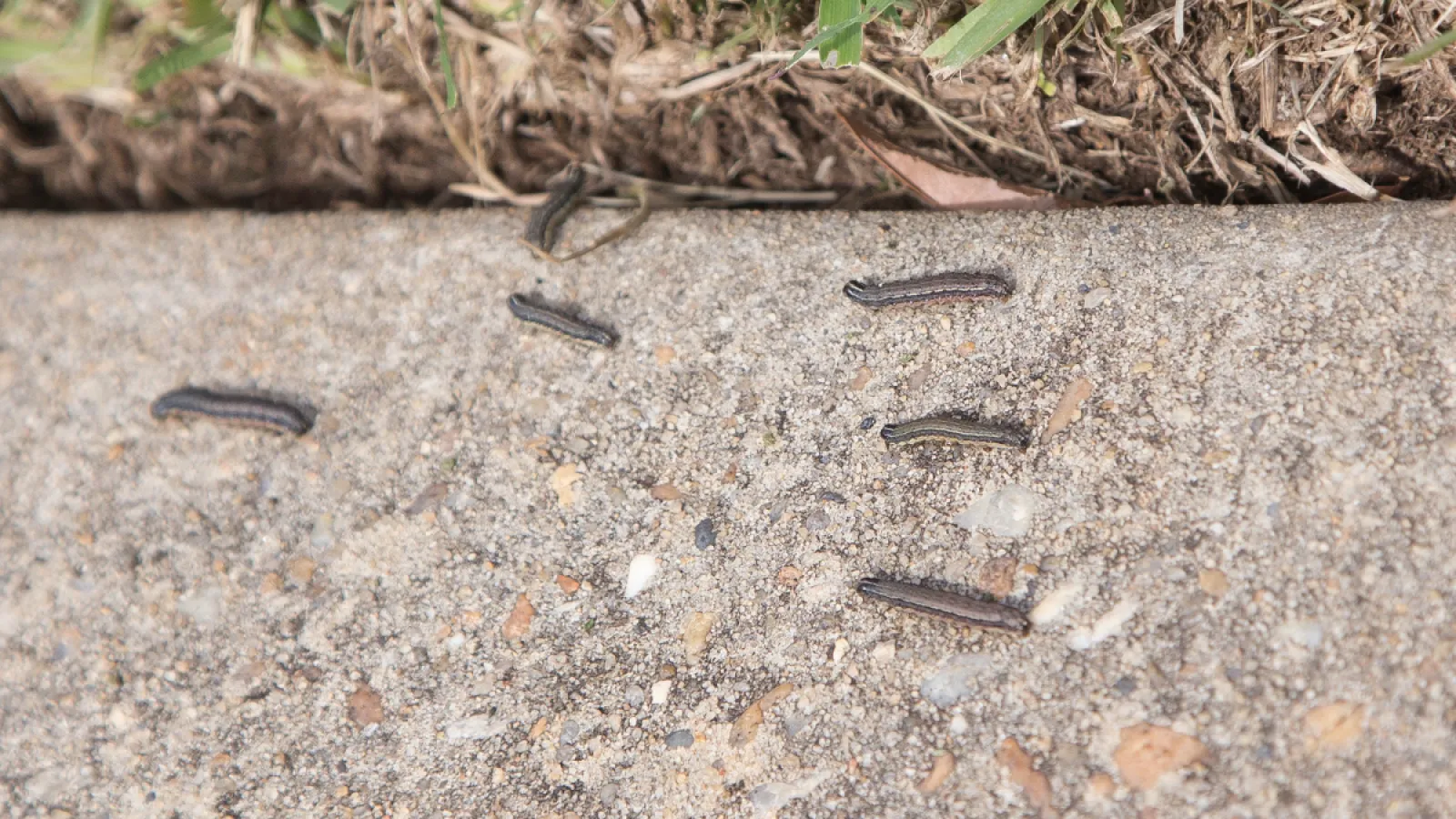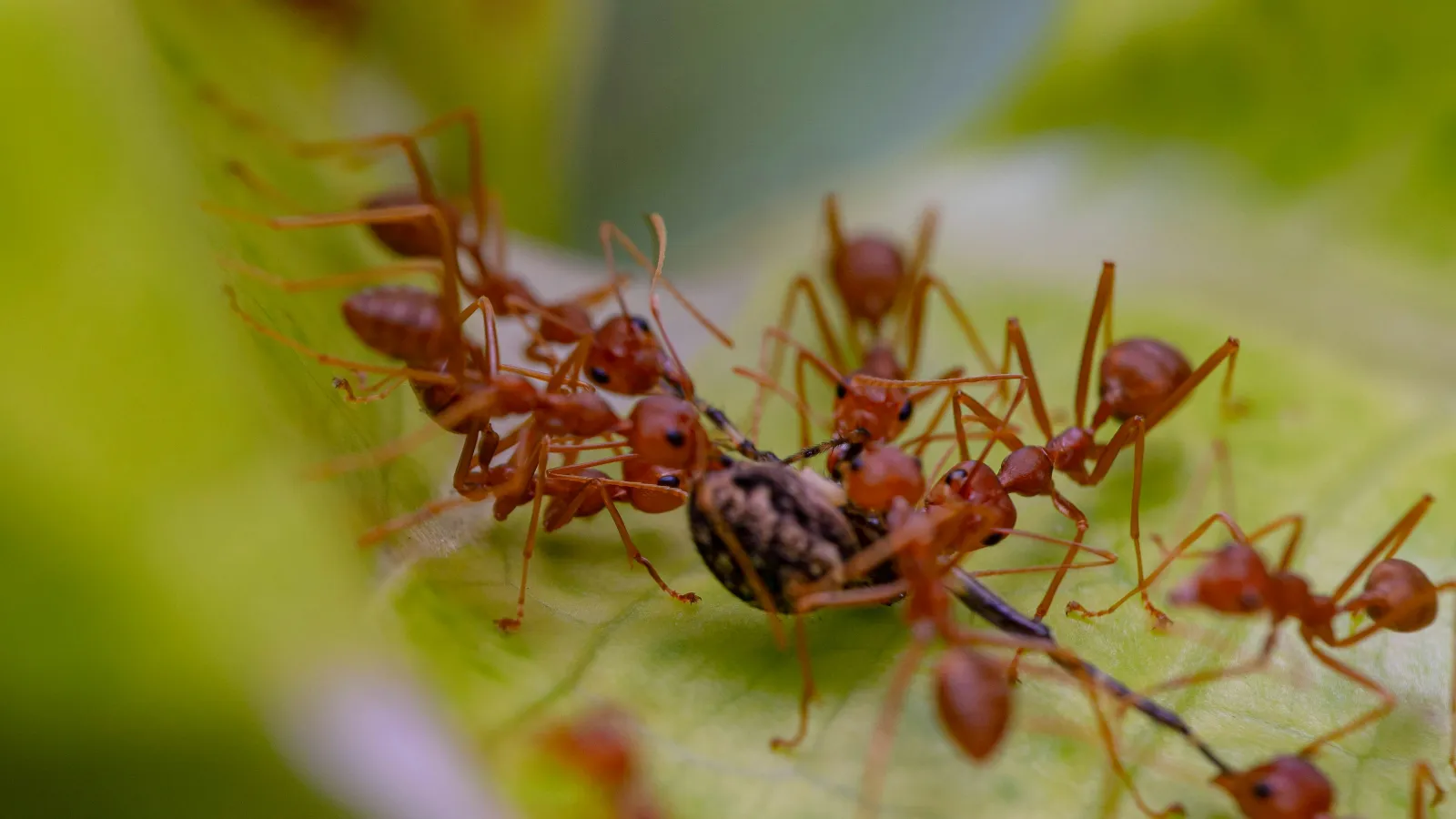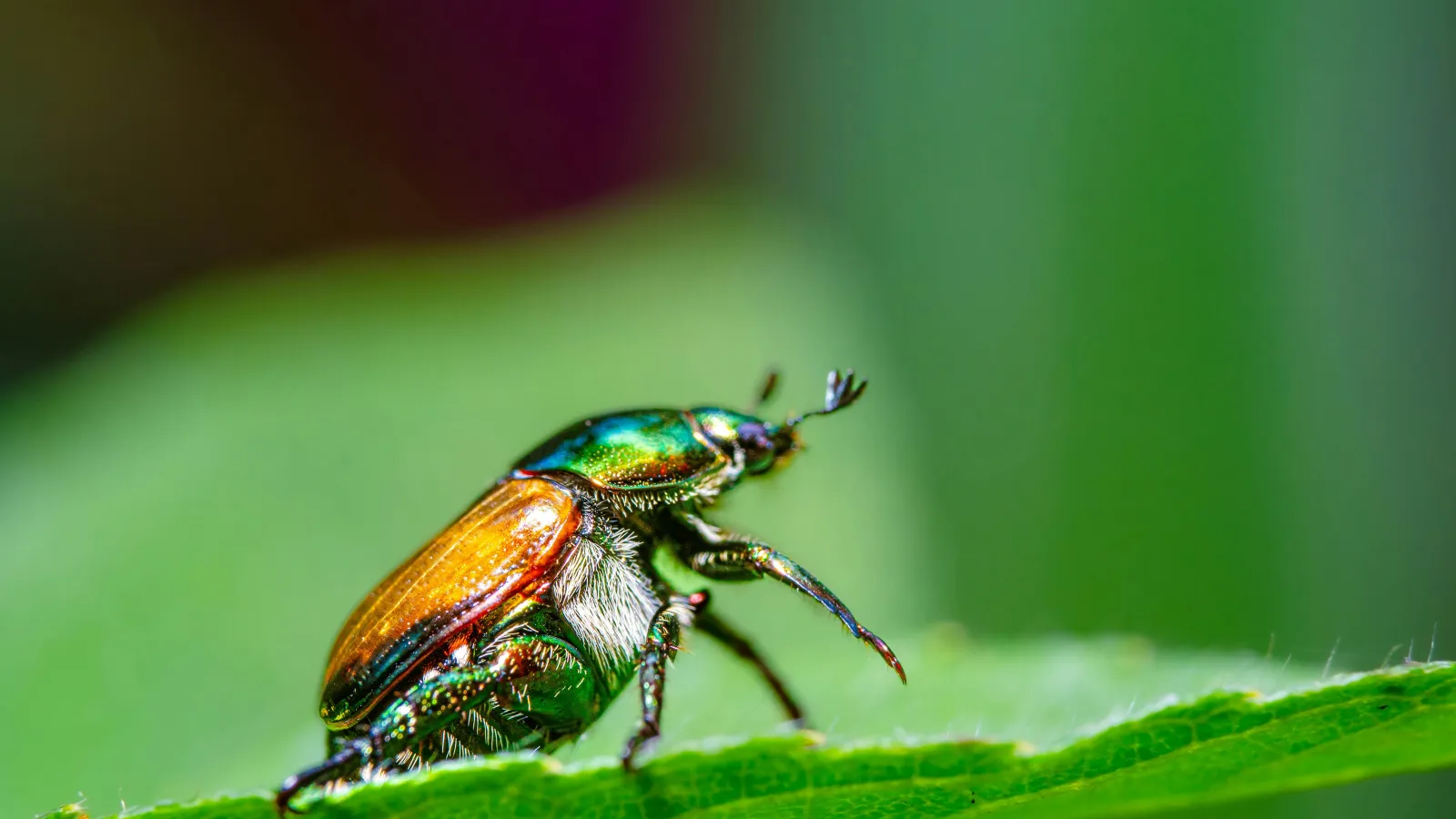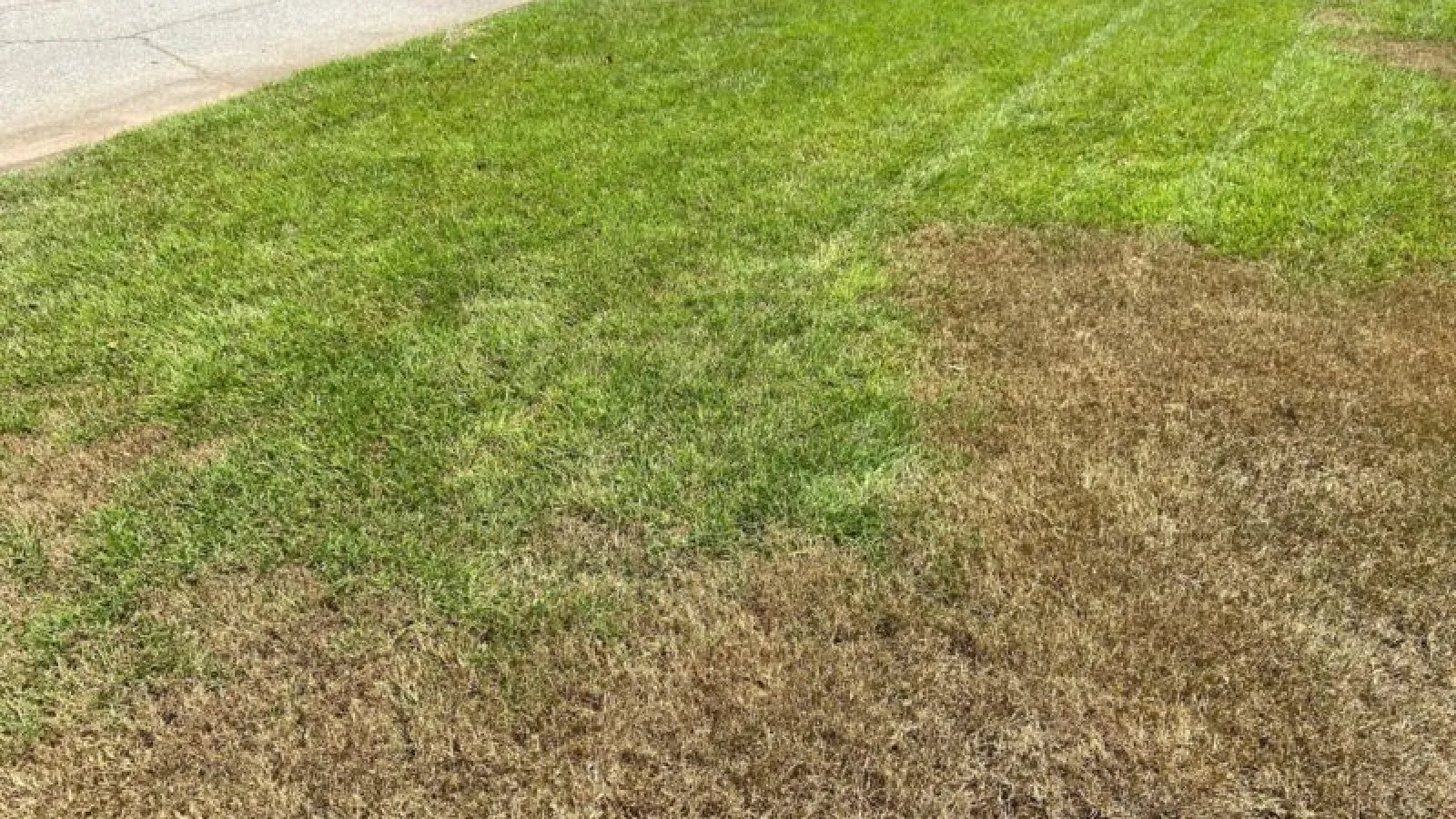
Armyworms
Many customers experienced armyworms first-hand in the summer of 2021. It was one of the worst armyworm infestations we've seen in years. We treated over 500 acres of turf last year alone for armyworms! Fortunately, we have a solution for armyworms. But before we talk about solutions, let's learn a bit more about these pesky lawn insects.
Armyworm Identification
An armyworm's name originates from agriculture where infestations resemble an "army marching" across large agricultural fields. Young larvae are small, green and difficult to see. They are hidden in the turfgrass canopy. As the armyworm grows, they become noticeable. Adult armyworms are approximately 1-1.5 inches in length. Their color changes to brown with white lines on the side and a reddish-brown head.
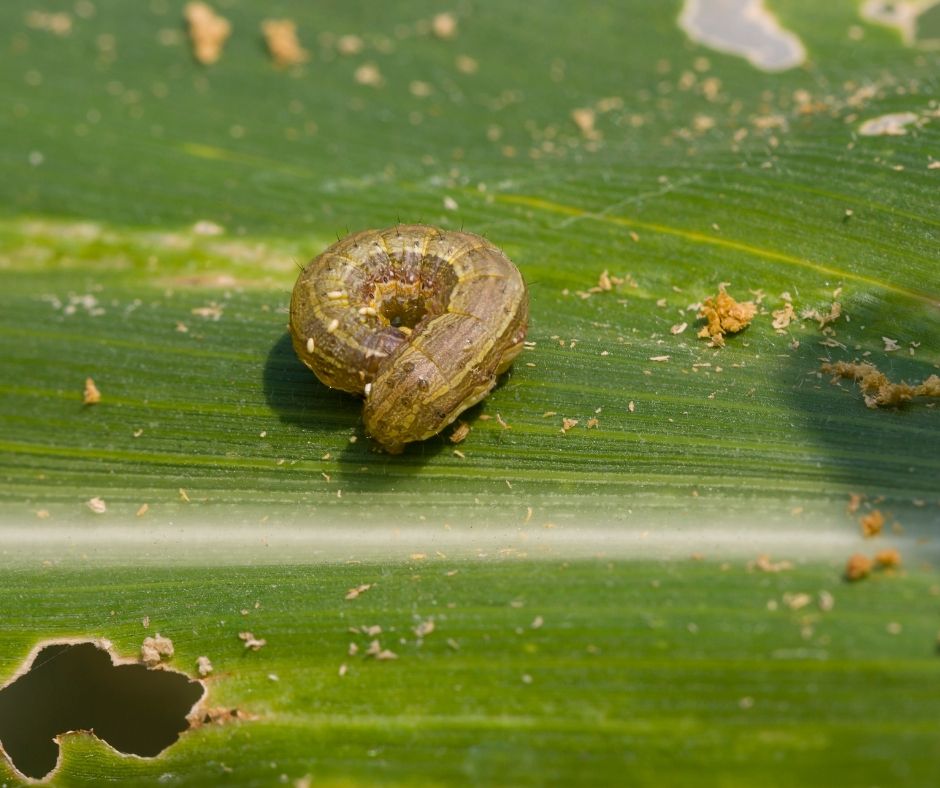
Feeding Habits & Lifecycle
The fall armyworm enjoys Fescue, Bermuda, St. Augustine and Rye grass types, to name a few. After the armyworms feed on your lawn for 2-3 weeks, they dig into the soil and pupate. Within a couple weeks, a new population of moths emerge. After emerging, the adult moth has a wingspan of approximately 1-1.5 inches long and can be difficult to distinguish from other moth species. At the moth stage, they are not a threat to your lawn.
Armyworm Damage
Late summer or early fall, when it's dry and hot, is when these little nuisances make their appearance in the southeast. One of the first signs of fall armyworm damage is large brown patches of grass throughout the lawn. As the larvae feed, they leave brown patches in the lawn that can be mistaken as heat, drought or even chemical stress. The brown areas start small and grow every day as the armyworms methodically continue to eat. Armyworms often choose areas near healthy, well-irrigated lawns to attack as they "march" across the lawn, destroying it.
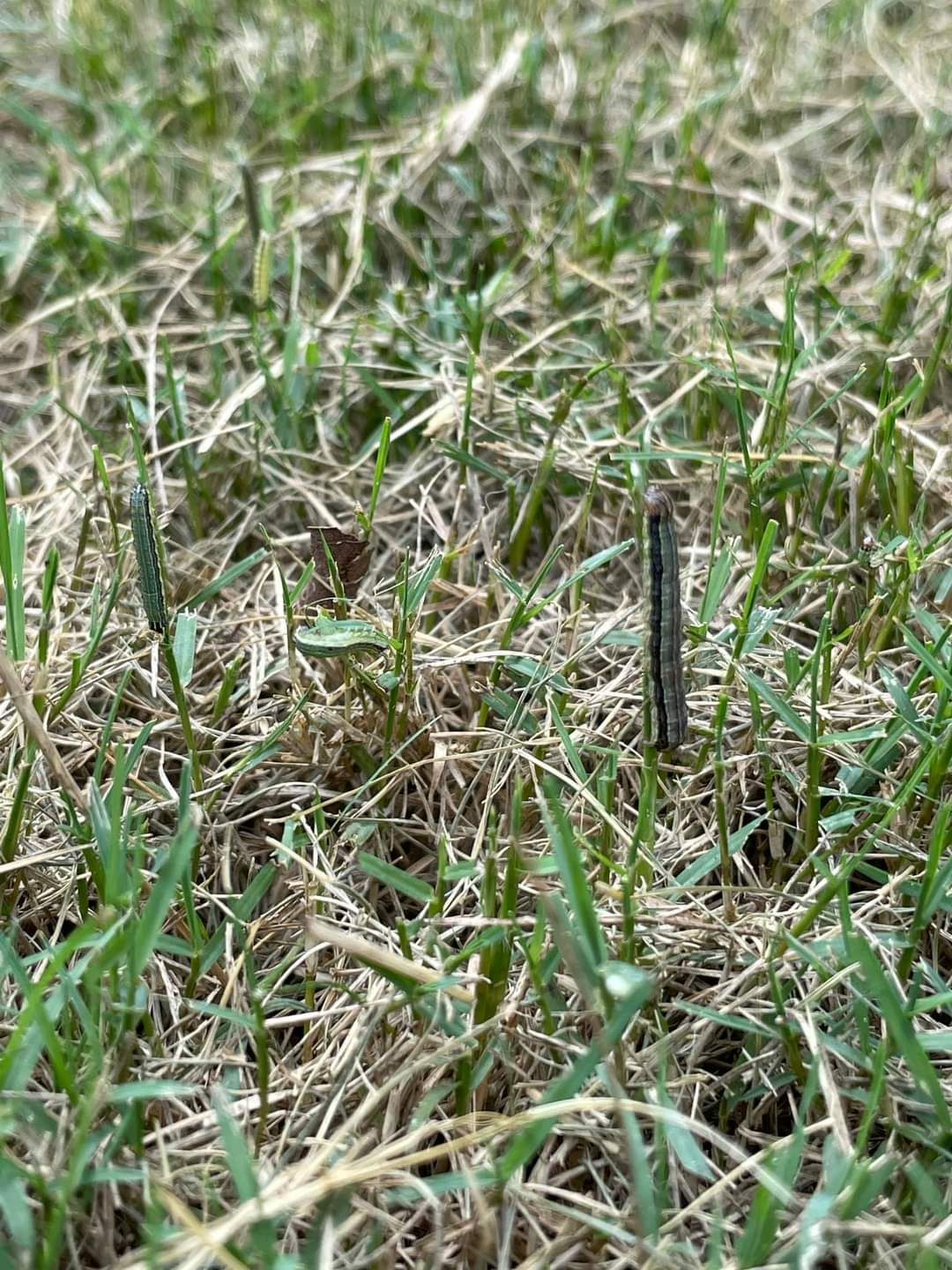
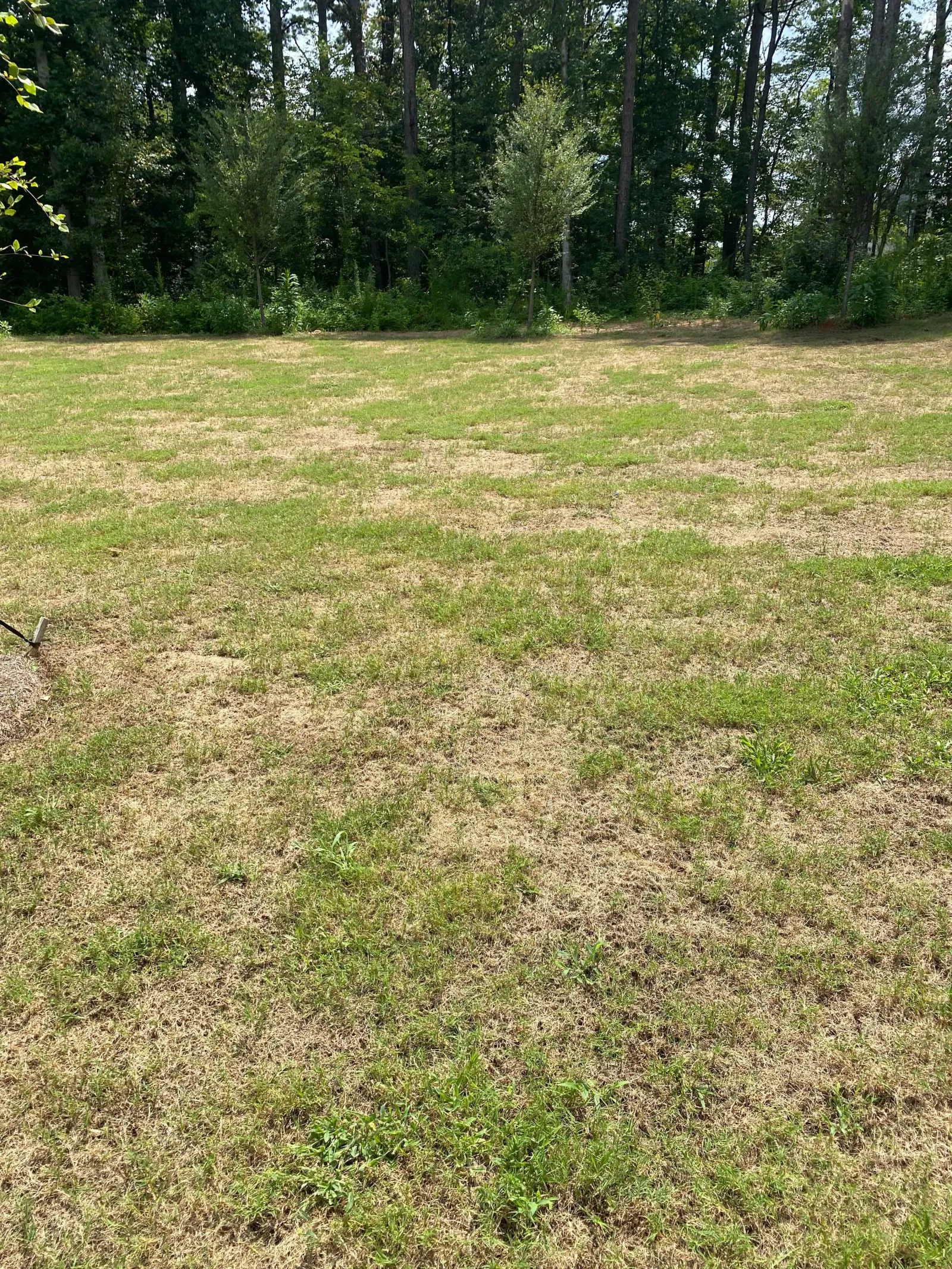
Armyworm Control
Oddly enough, armyworm infestations usually come in waves-some years are worse than others. Careful inspection of the lawn is especially important when it comes to armyworms, due to their aggressive feeding. Armyworm damage can progress to complete loss of foliage in a matter of days when the population is high and the turf is left untreated. Although any damaged area will recover, it may take weeks. Chemical control is the most reliable method; however doing this without an expert could lead to further damage. Fortunately, we have a solution! Applied in July, this treatment offers armyworm protection through their active session (through October).To learn more about our preventative armyworm treatment, contact us today.
